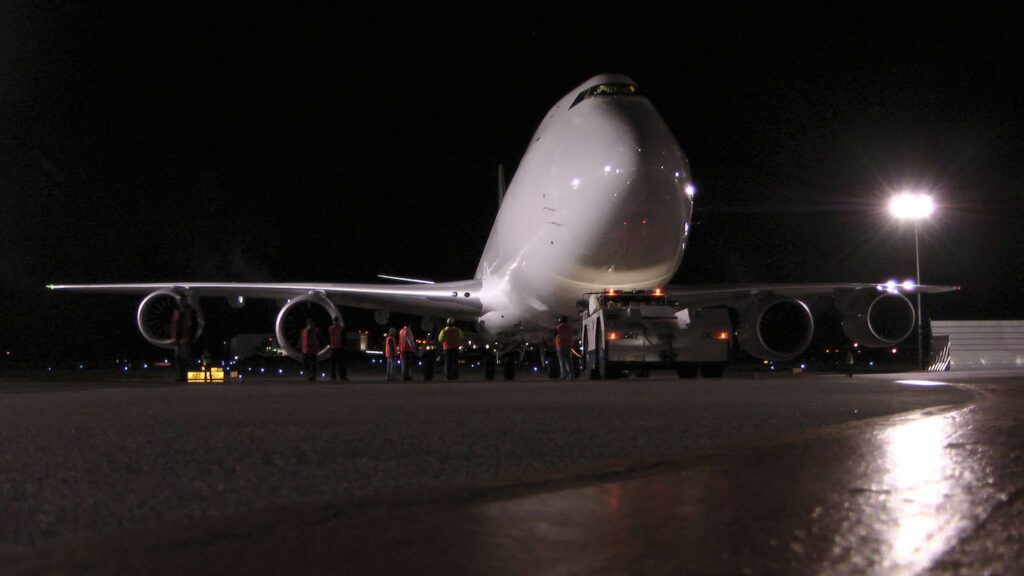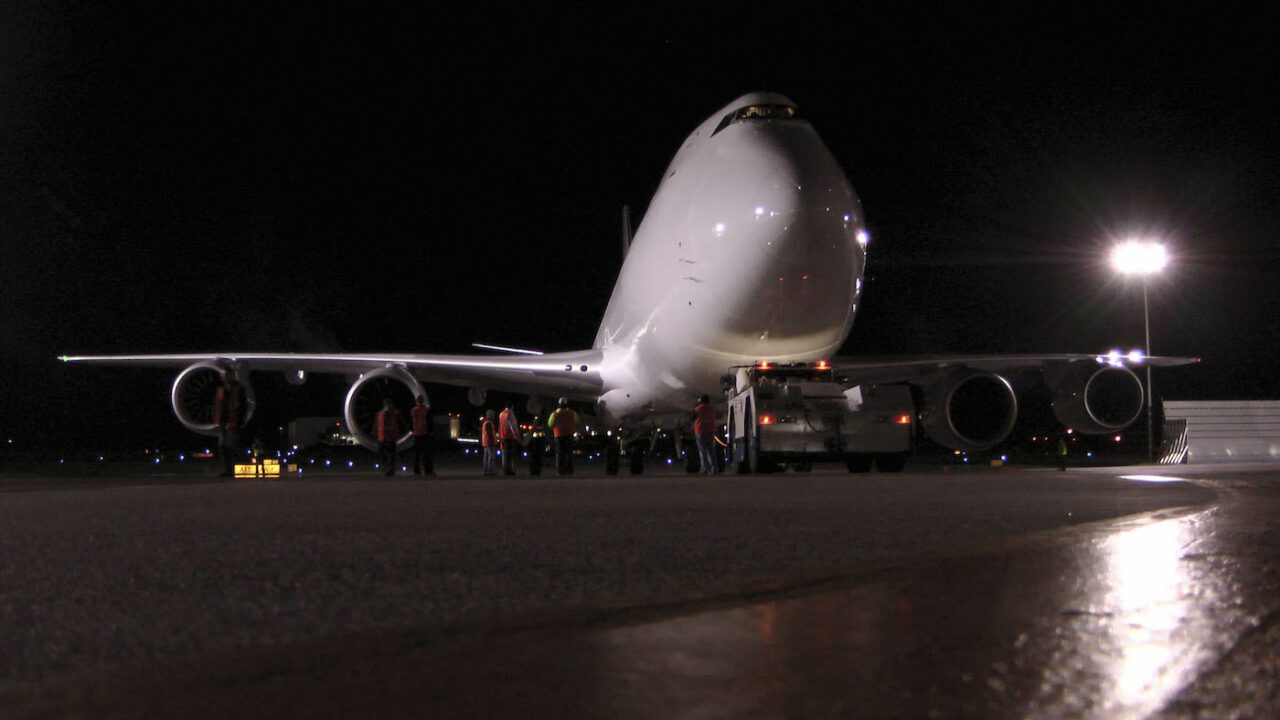FAA Requires Boeing 747-8, 777 Flight Manual Changes to Address 5G C-Band Radio Altimeter Interference


A new airworthiness directive published by the FAA on Tuesday, Jan. 25, requires airplane flight manual changes for all Boeing 777, 747-8 and 747-8F aircraft. Pictured here is the 747-8F aircraft that Boeing used to complete certification testing for the model in 2011. (Boeing)
The Federal Aviation Administration (FAA) issued a new airworthiness directive (AD) on Jan. 25 requiring airplane flight manual (AFM) changes for Boeing 747-8, 747-8F and 777 after determining that the radio altimeters featured on these aircraft models “cannot be relied upon to perform their intended function if they experience interference from wireless broadband operations in the 3.7-3.98 GHz frequency band (5G C-Band).”
Radio altimeter data featured on the Boeing aircraft models identified in the directive are vulnerable to interference that may affect “pitch control laws, that provide tail strike protection regardless of the visibility conditions or approach type being used at airports in regions where 5G C-band stations have been deployed,” according to the directive. Other systems that could be impacted include the auto throttle, ground proximity warning, thrust reversers and Traffic Collision Avoidance System.
“The AD does not apply to landings at airports where the FAA determined the aircraft altimeters are safe and reliable in the 5G C-band environment. It also does not apply to airports where 5G isn’t deployed,” the agency said in its latest statement on the ongoing 5G C-band rollout.
There are approximately 336 aircraft registered in the U.S and another 1,714 worldwide impacted by the new AD. The FAA determined that the AFM changes required under the new directive will cost the combined U.S.-registered fleet $28,560.
FAA’s requirement for 747-8 and 777 operators to change the limitations section of their AFM comes following an evaluation of 5G C-Band interference by Boeing that occurred since the issuing of an AD by the agency last month requiring similar changes that focused on low visibility conditions. That testing, according to the directive, determined that anomalies from 5G C-Band interference may not be evident to pilots until low altitudes and could result in “uncommanded, inappropriate pitch inputs, adversely affecting controllability.”
The directive comes following a series of 5G C-Band policy updates issued by the FAA, including one last week where altimeters for most of the in-service Airbus, Boeing and Embraer U.S. airline-operated fleet were cleared from vulnerability to any interference issues. Boeing issued “Multi Operator Messages MOM-MOM-22-0024-01B(R2)” to affected 747-8 and 777 operators last week. A key update in the new directive from the FAA is that it is not limited to the low visibility and poor weather conditions outlined by the agency on Dec. 23.
AT&T and Verizon have agreed to limit the power of radio frequencies generated by 5G C-Band stations deployed near airports for the first six months of the year.
Boeing 747-8 and 777 operators are provided the opportunity to request permission for Alternative Methods of Compliance (AMOCs) in the new AD. The FAA also included further details on why commercial aviation radio altimeters are vulnerable to 5G C-Band interference.
“The radio altimeter must detect faint signals reflected off the ground to measure altitude, in a manner similar to radar,” the agency writes in the directive. “Out-of-band signals could significantly degrade radio altimeter functions during critical phases of flight, if the altimeter is unable to sufficiently reject those signals.”
The post FAA Requires Boeing 747-8, 777 Flight Manual Changes to Address 5G C-Band Radio Altimeter Interference appeared first on Aviation Today.
—————
Boost Internet Speed–
Free Business Hosting–
Free Email Account–
Dropcatch–
Free Secure Email–
Secure Email–
Cheap VOIP Calls–
Free Hosting–
Boost Inflight Wifi–
Premium Domains–
Free Domains






